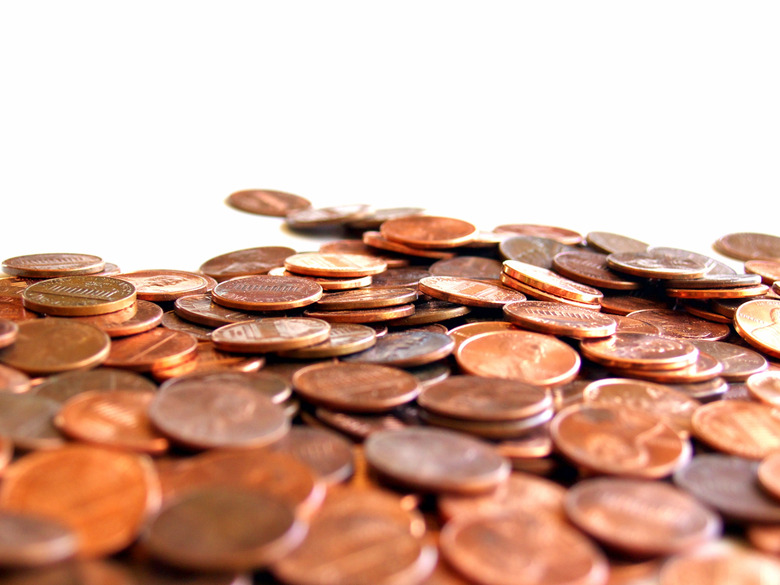How To Determine If Copper Is Real
Copper (Cu) is used frequently as electrical wire due to its conductivity. This metal is also a constituent in many objects, such as coins. If you are familiar with some of the chemical and physical properties of copper, you can perform a number of different tests to gauge the purity of an object's copper.
TL;DR (Too Long; Didn't Read)
Determine if an object contains copper with a magnetism test, a resistivity test, density measurement and hydrochloric acid application.
Magnetism Test
Magnetism Test
Copper is only slightly magnetic. Therefore, if you hold a magnet close to the copper object you wish to test, you shouldn't see any effects. Powerful magnets, however, may have a slight effect on your copper object. When you drop a strong magnet through a copper tube, it will appear to fall more slowly than normal due to eddy currents generated in the copper by the moving magnetic field. If your object exhibits these magnetic properties, it may be copper.
Resistivity and Conductivity
Resistivity and Conductivity
Copper has a resistivity of roughly 1.7 x 10^-8 ohm-meters at room temperature. This means it conducts electrical current very well. If your object does not conduct current well, it is not made of pure copper. If you can determine the resistance of your object with an ohmmeter, you can calculate the resistivity of the material. To convert from resistance to resistivity, multiply resistance by the cross-sectional area of the object and divide by its length. If the resistivity of your object is significantly larger than copper's resistivity, it is likely not made of pure copper.
Density Measurement
Density Measurement
Test your sample object by measuring its density. The density of copper is 8.92 grams per milliliter. To determine the density of your object, weigh it then divide that weight by its volume. If the density of your object is significantly different from the density of copper, your object is not pure copper.
Color of Copper
Color of Copper
To find out if your object is made of copper, clean it with a mixture of table salt and vinegar and then observe its color changes. One of the chemicals created in the combination of table salt and vinegar is hydrochloric acid. When you wipe your object after applying table salt and vinegar, the hydrochloric acid helps clean the surface of the material. If the material is copper, it eventually oxidizes from exposure to oxygen, water and carbon dioxide. This creates a greenish color on surface of the object.
Cite This Article
MLA
Murmson, Serm. "How To Determine If Copper Is Real" sciencing.com, https://www.sciencing.com/determine-copper-real-10511/. 4 June 2018.
APA
Murmson, Serm. (2018, June 4). How To Determine If Copper Is Real. sciencing.com. Retrieved from https://www.sciencing.com/determine-copper-real-10511/
Chicago
Murmson, Serm. How To Determine If Copper Is Real last modified March 24, 2022. https://www.sciencing.com/determine-copper-real-10511/
